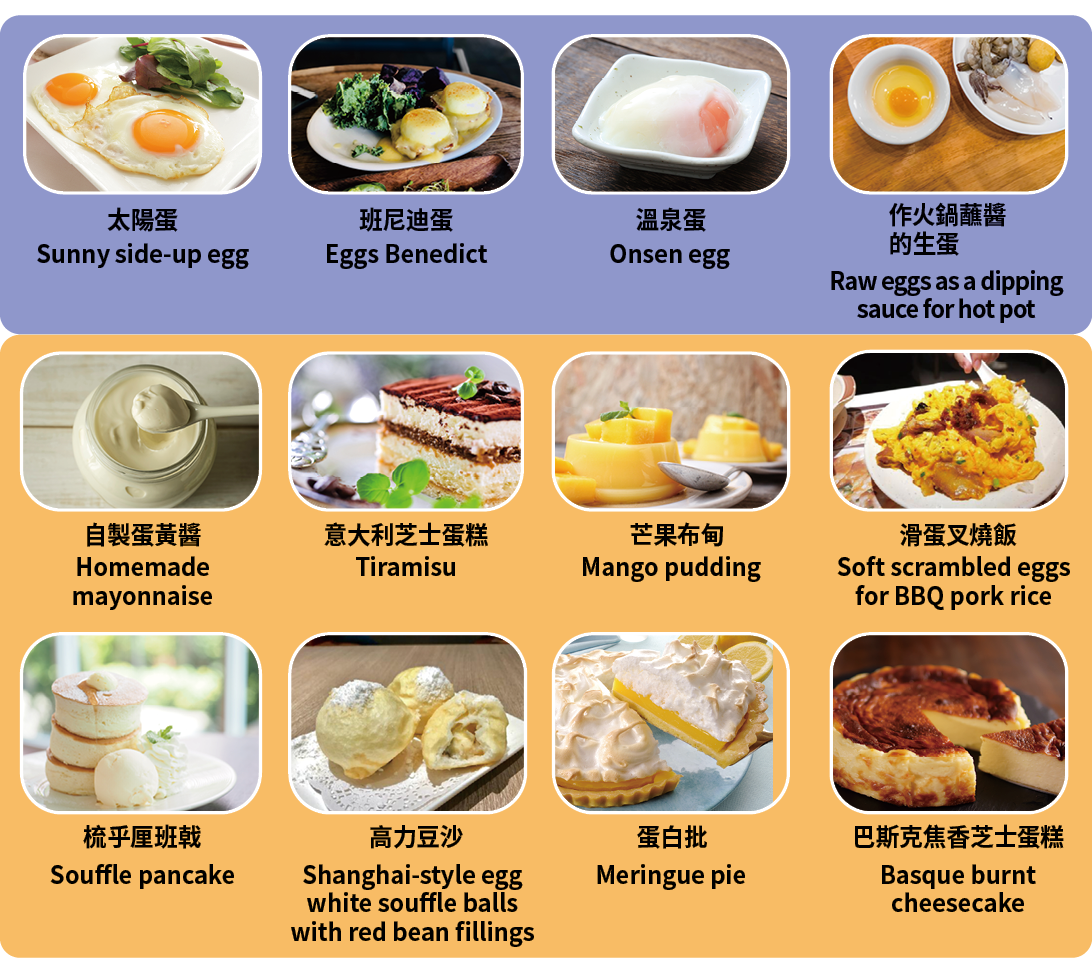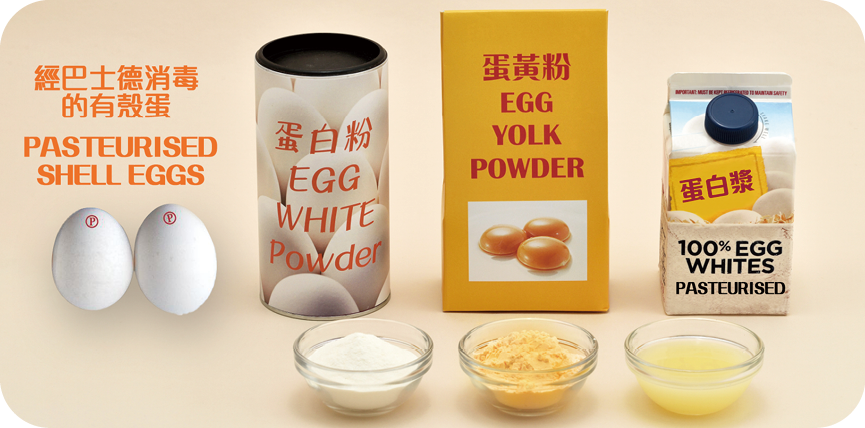
Food Safety Focus (174th Issue, January 2021) – Food Safety Platform
Pasteurised Eggs – a Safer Cousin of Raw Table Eggs
Reported by Ms. Melva CHEN, Scientific Officer,
Risk Communication Section, Centre for Food Safety
Easy to prepare and reasonably priced, eggs are a parcel of nutrition waiting to be released, although it takes a bit of knowledge on how to handle and prepare them safely to get all the benefits of eating eggs. The inside of eggs that appear normal can contain bacteria called Salmonella, which can make people sick if the eggs are not cooked thoroughly. What if the egg-containing delicacies require no heat treatment? Pasteurised eggs can be a safe alternative.

Figure 2: Examples of raw or undercooked egg dishes
Beware of Recipes Containing Raw or Undercooked Eggs
Fresh eggs, even those with clean, uncracked shells, may contain Salmonella that can cause Salmonellosis. Symptoms include nausea, fever, abdominal pain, diarrhoea and vomiting, but serious consequences, even death, may result in the elderly, infants and those with impaired immune systems. In recent years, the number of confirmed food poisoning outbreaks related to Salmonella has been on a surge. According to the Centre for Health Protection, there were 48 outbreaks involving Salmonella in 2016, whereas from January to August 2020, there have been already 104 outbreaks, of which eggs account for 101 outbreaks (affecting 240 persons) as the single incriminated food item. One of the underlying reasons is probably the rising popularity of raw or undercooked egg dishes which do not use pasteurised eggs.
Some foods are obviously prepared with undercooked eggs, as evident by the soft, runny egg yolks, including sunny side-up eggs and eggs Benedict for breakfast, onsen eggs in ramen noodles, as well as raw eggs used as the dipping sauce for hot pot. Some recipes may contain raw or undercooked eggs that are lesser known to people. Homemade mayonnaise, tiramisu, mousses and puddings, for example, are usually made with raw eggs. Soft scrambled eggs as the topping for BBQ pork rice are often lightly cooked to achieve a silky mouth feel. Some egg-containing desserts are not thoroughly cooked to retain the soft, fluffy texture, such as souffle pancakes, Shanghai-style egg white souffle balls with red bean fillings and meringue pies. The recently on-the-trend Basque burnt cheesecake is one of the kind not baked all the way through to keep its centre gooey.
Pasteurisation of Egg Products and Shell Eggs
Pasteurisation, named after its inventor Louis Pasteur, a 19th century French scientist, is a process of heating foods to a specific temperature for a set period of time to destroy pathogens and extend shelf life. Pasteurisation of eggs has the merit of, on the one hand, destroying dangerous microorganisms such as Salmonella, and, on the other hand, neither having the eggs cooked nor affecting their colour, flavour, nutritional value or use. Pasteurised egg products such as liquid or powdered whole eggs, egg yolks and egg whites have long been available on the market and are commonly used in some local food premises for raw or lightly cooked dishes. Interestingly, although the science for pasteurising eggs in their shells was developed in the late 1980s, the production was scaled up commercially only in the last decade. Shell eggs can be pasteurised in a hot water immersion process that strictly controls the temperature and time, usually between 55°C to 60°C for more than 60 minutes, to reduce nearly all (i.e. 99.999%) of the Salmonella while not cook up the eggs. After pasteurisation, the eggs are coated with food-grade wax to maintain freshness and prevent contamination. Recently, industries are also exploring other more cost-effective techniques, such as high-moisture hot air and microwave, for pasteurisation of shell eggs. Pasteurised shell eggs are available on the local market for food business and household use.
Use of Pasteurised Eggs
Both food business and home cooking should use pasteurised shell eggs or egg products for dishes calling for raw or lightly cooked eggs. Also, food handlers should note that good hygiene practices should always be followed to avoid cross-contamination of foods from other sources even though pasteurised shell eggs or egg products are used. As pasteurisation does not kill all forms of microorganisms and the pasteurised eggs usually will not undergo further heat treatment when used, it is important to refrigerate pasteurised eggs at or below 4˚C or follow the storage instructions provided on food labels to prevent spoilage.

Figure 3: Pasteurised shell eggs, egg powders and liquid eggs are available on the market


